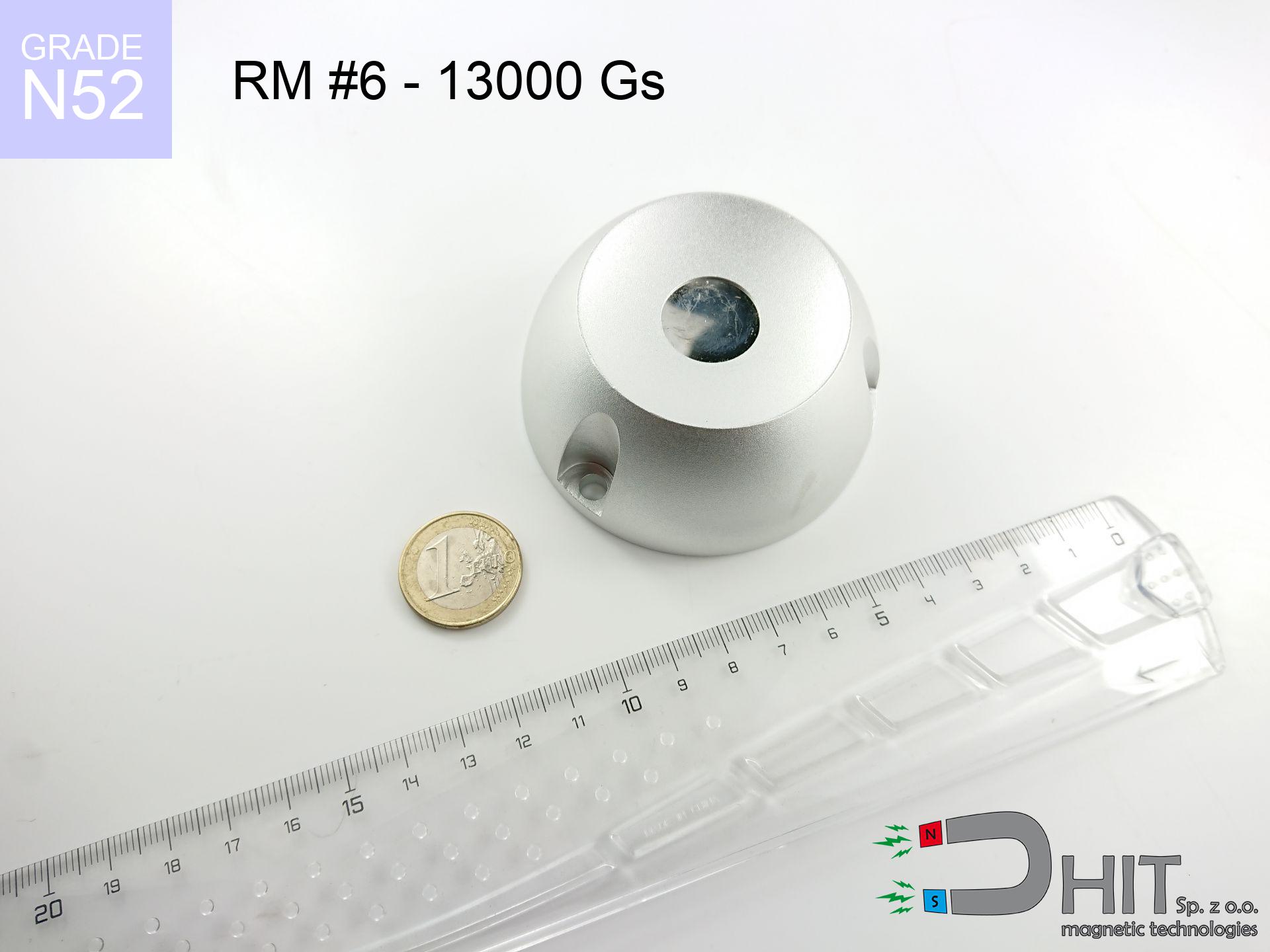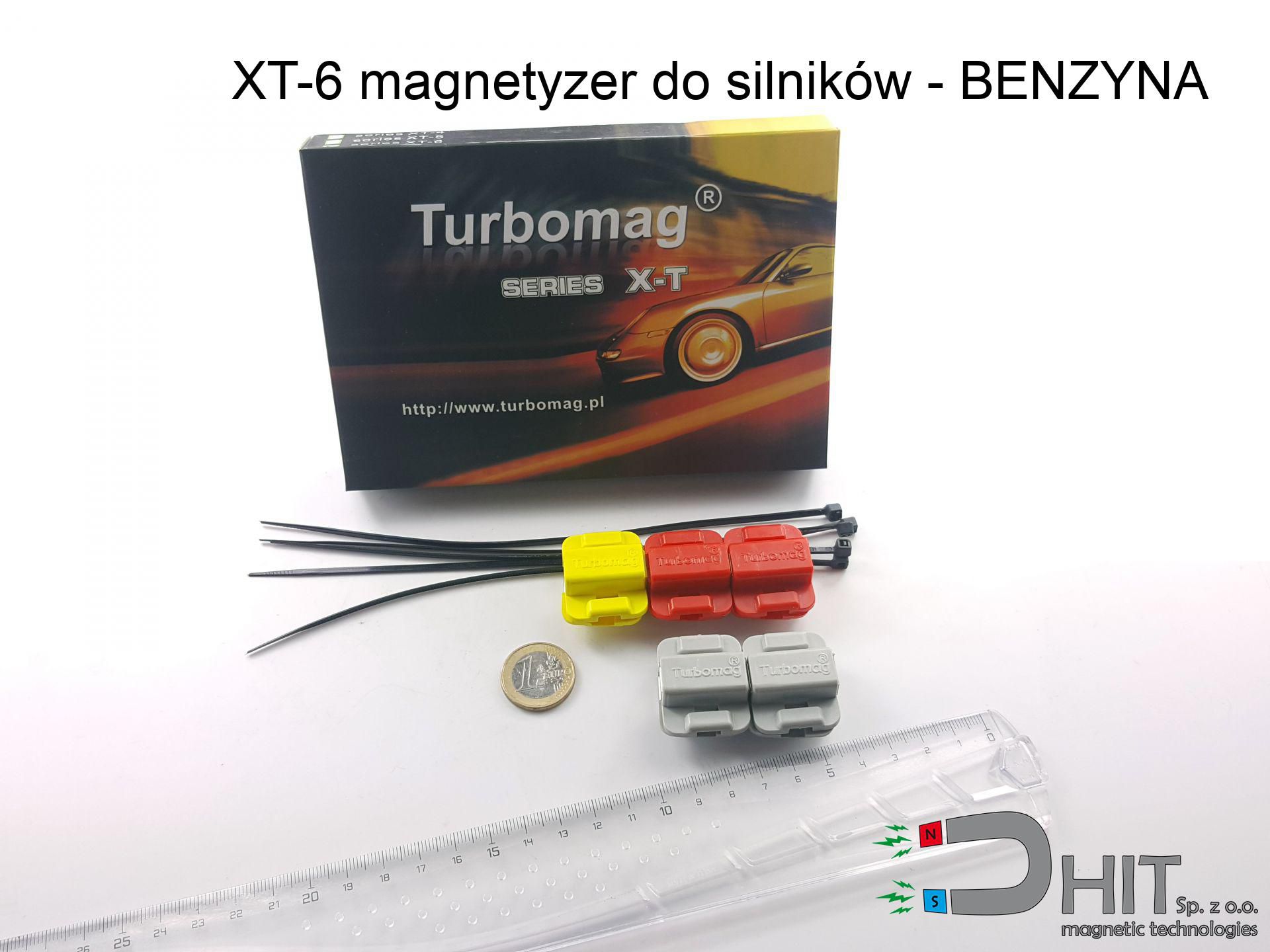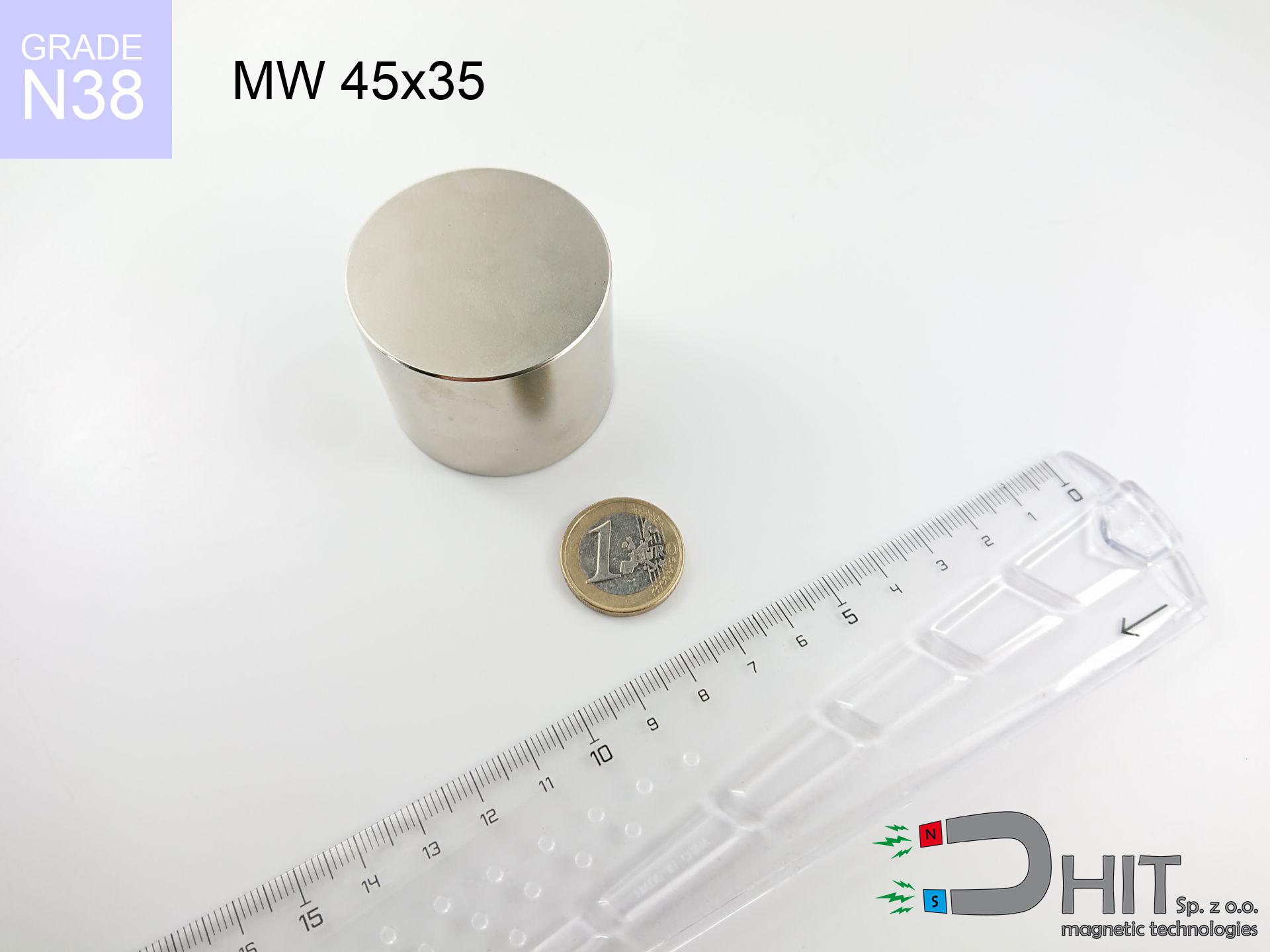SM 32x275 [2xM8] / N52 - magnetic roller
magnetic separator
catalog number 130458
GTIN: 5906301813293
diameter Ø
32
mm [±0,1 mm]
height
275
mm [±0,1 mm]
max. temperature
≤ 80
°C
catalog number 130458
GTIN: 5906301813293
diameter Ø
32 mm [±0,1 mm]
height
275 mm [±0,1 mm]
max. temperature
≤ 80 °C
897.90 ZŁ gross price (including VAT) / pcs +
730.00 ZŁ net price + 23% VAT / pcs
bulk discounts:
need more quantity?Don't know what to choose?
Give us a call tel: +48 22 499 98 98 or get in touch via contact form on our website. You can check the mass and the appearance of neodymium magnet in our power calculator force calculator
Orders placed by 2:00 PM will be shipped on the same business day.
Specification: magnetic separator 32x275 [2xM8] / N52
Magnetic properties of the material N52
Physical properties of sintered neodymium magnets Nd2Fe14B
Recommended articles for purchase
Advantages as well as disadvantages of neodymium magnets NdFeB.
Apart from immense power, neodymium magnets have the following advantages:
- They do not lose their power (of the magnet). After about 10 years, their strength decreases by only ~1% (theoretically),
- They are highly resistant to demagnetization by external magnetic field,
- By applying a shiny coating of nickel, gold, or silver, the element gains an aesthetic appearance,
- They have very high magnetic induction on the surface of the magnet,
- Magnetic neodymium magnets are characterized by very high magnetic induction on the surface of the magnet and can operate (depending on the shape) even at temperatures of 230°C or higher...
- Thanks to the flexibility in shaping or the ability to adapt to specific requirements – neodymium magnets can be produced in various forms and dimensions, which amplifies their universality in usage.
- Key role in the industry of new technologies – are used in HDD drives, electric drive mechanisms, medical apparatus or very modern machines.
Disadvantages of neodymium magnets:
- They are prone to breaking as they are fragile when subjected to a powerful impact. If the magnets are exposed to impacts, it is suggested using magnets in a protective case. The steel housing in the form of a holder protects the magnet from impacts and simultaneously increases its overall strength,
- High temperatures can reduce the power of neodymium magnets. Typically, after heating above 80°C, most of them experience a permanent reduction in strength (although it is dependent on the shape and size). To prevent this, we offer special magnets marked with the symbol [AH], which are highly resistant to high temperatures. They can operate even at temperatures up to 230°C, making them an ideal solution for applications requiring high-temperature operation,
- Magnets exposed to a humid environment can corrode. Therefore, when using them outdoors, we suggest using waterproof magnets made of rubber, plastic, or other moisture-resistant materials,
- The use of a cover - a magnetic holder is recommended due to the limited production capabilities of creating threads or complex shapes in the magnet
- Potential hazard to health from tiny fragments of magnets are risky, if swallowed, which becomes significant in the context of children's health. It's also worth noting that tiny parts of these magnets are able to be problematic in medical diagnosis in case of swallowing.
Caution with Neodymium Magnets
Neodymium magnets can demagnetize at high temperatures.
While Neodymium magnets can lose their magnetic properties at high temperatures, it's important to note that the extent of this effect can vary based on factors such as the magnet's material, shape, and intended application.
Do not give neodymium magnets to youngest children.
Neodymium magnets are not toys. You cannot allow them to become toys for children. In such a situation, surgery is necessary to remove them. In the worst case scenario, it can result in death.
Neodymium magnets are over 10 times more powerful than ferrite magnets (the ones in speakers), and their power can surprise you.
On our website, you can find information on how to use neodymium magnets. This will help you avoid injuries and prevent damage to the magnets.
Make sure not to bring neodymium magnets close to the TV, wallet, and computer HDD.
Neodymium magnets produce strong magnetic fields that can destroy magnetic media such as floppy disks, video tapes, HDDs, credit cards, magnetic ID cards, cassette tapes, or other devices. They can also damage videos, televisions, CRT computer monitors. Remember not to place neodymium magnets close to these electronic devices.
Magnets made of neodymium are characterized by being fragile, which can cause them to crumble.
Neodymium magnets are characterized by significant fragility. Magnets made of neodymium are made of metal and coated with a shiny nickel, but they are not as durable as steel. In the event of a collision between two magnets, there may be a scattering of fragments in different directions. Protecting your eyes is crucial in such a situation.
Do not bring neodymium magnets close to GPS and smartphones.
Neodymium magnets are a source of intense magnetic fields that cause interference with magnetometers and compasses used in navigation, as well as internal compasses of smartphones and GPS devices.
The magnet coating contains nickel, so be cautious if you have a nickel allergy.
Studies clearly indicate a small percentage of people who suffer from metal allergies such as nickel. An allergic reaction often manifests as skin redness and rash. If you have a nickel allergy, you can try wearing gloves or simply avoid direct contact with nickel-plated neodymium magnets.
Neodymium magnets should not be near people with pacemakers.
In the case of neodymium magnets, there is a strong magnetic field. As a result, it interferes with the operation of a heart pacemaker. However, if the magnetic field does not affect the device, it can damage its components or deactivate the device when it is in a magnetic field.
Dust and powder from neodymium magnets are highly flammable.
Avoid drilling or mechanical processing of neodymium magnets. Once crushed into fine powder or dust, this material becomes highly flammable.
Neodymium Magnets can attract to each other due to their immense internal force, causing the skin and other body parts to get pinched and resulting in significant injuries.
Magnets attract each other within a distance of several to around 10 cm from each other. Remember not to place fingers between magnets or alternatively in their path when they attract. Magnets, depending on their size, can even cut off a finger or alternatively there can be a significant pressure or a fracture.
In order to illustrate why neodymium magnets are so dangerous, read the article - How very dangerous are very strong neodymium magnets?.

![SM 32x275 [2xM8] / N52 - magnetic roller SM 32x275 [2xM8] / N52 - magnetic roller](https://cdn3.dhit.pl/graphics/products/sm-32x275-2xm8-get.jpg)





